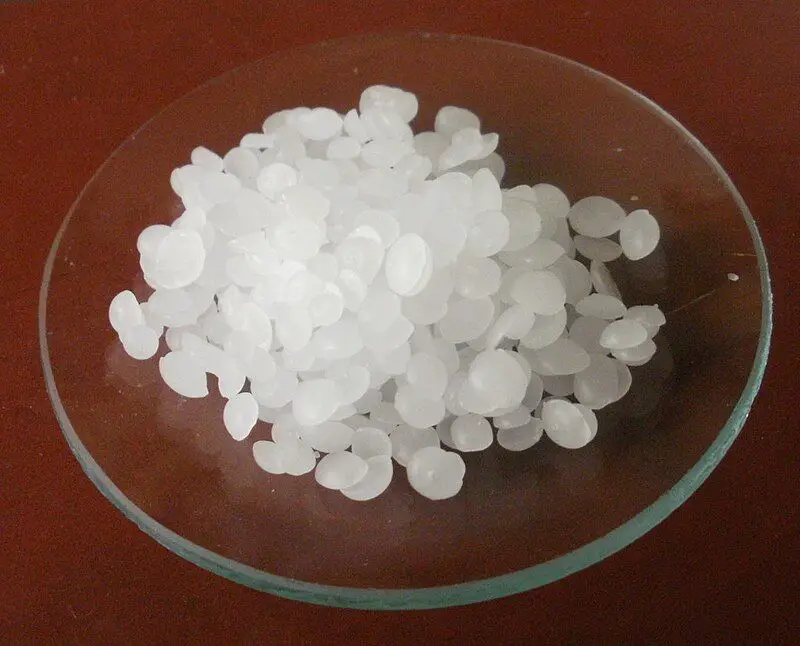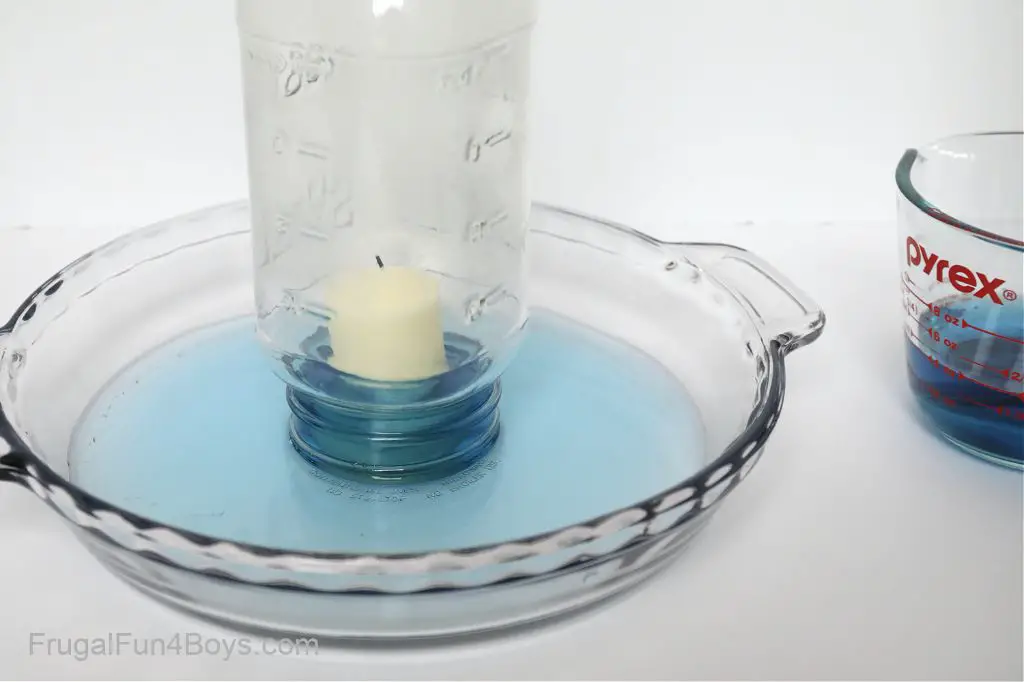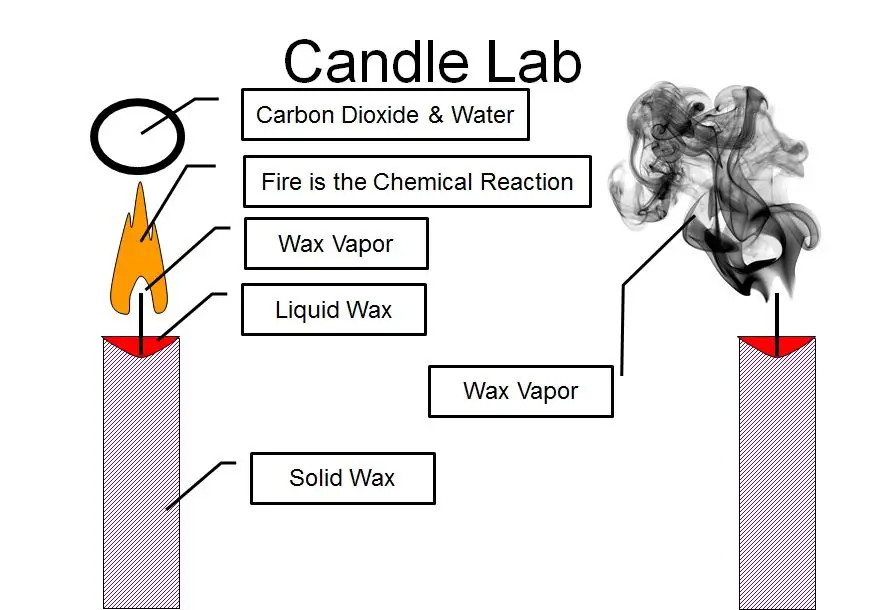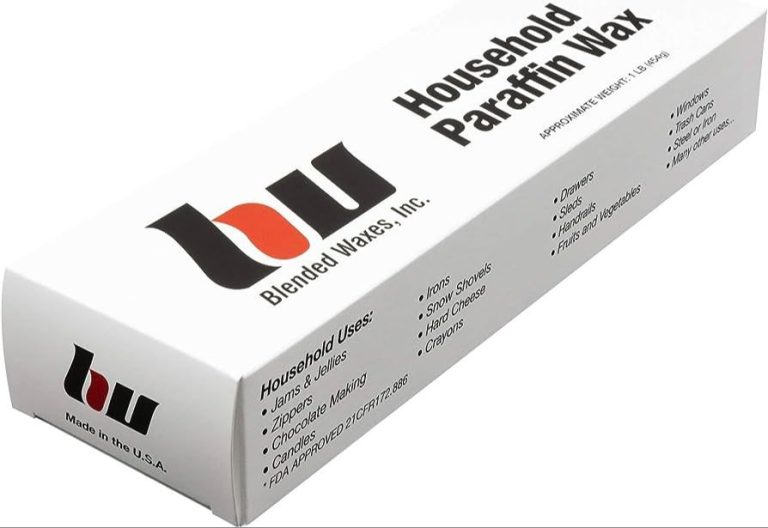What Makes Wax Solid?
Wax is a simple lipid that is solid at room temperature. It consists of a mixture of long-chain fatty acids and alcohols that are joined together by ester bonds. Waxes can exist in any of the three states of matter – solid, liquid, or gas – depending on temperature and pressure. What gives wax its solid structure at room temperature are the strong intermolecular forces between wax molecules.
Waxes are generally solid at ambient temperatures but melt above approximately 40–50 °C (104–122 °F) to give a low viscosity liquid. The melting point varies with the type of wax. The main component of wax is the ester myricyl palmitate which is C15H31COOC16H33. It is a straight chain molecule, fully saturated, with long alkyl side chains. The van der Waals interactions between these long hydrophobic chains is the source of the hardness and high melting point for waxes (Reference: https://en.wikipedia.org/wiki/Wax).
This introduction covers the definition of wax, provides an overview of what makes it solid, and discusses wax’s different states of matter.
Chemical Composition
The main chemical components of wax are long-chain hydrocarbons, esters, and fatty acids https://en.wikipedia.org/wiki/Wax. Waxes are composed of straight chain monohydric alcohols known as paraffins. The chemical formula for paraffin wax is CnH2n+2, where n ranges from 18 to 35 https://dongkeunited.com/2021/12/20/paraffin-wax-characteristics-chemical-composition-and-history/. This means paraffin wax contains between 18 to 35 carbon atoms in each alkane molecule. The longer the carbon chain length, the higher the melting point of the wax. These long hydrocarbon chains are what give wax its malleable, pliable solid state at room temperature.
The chemical composition of wax directly affects its physical state. The long hydrocarbon chains allow wax molecules to pack closely together through van der Waals forces. This crystalline packing gives wax a rigid structure in its solid state. The strength of these intermolecular forces determines the melting point – the temperature at which the solid transitions to a liquid state. Waxes with longer hydrocarbon chains have stronger van der Waals forces and higher melting points.
Intermolecular Forces
Wax is composed of long-chain hydrocarbons known as paraffins. The intermolecular forces between these hydrocarbon chains play a key role in determining the physical state and melting point of wax.
The main intermolecular forces present in wax are van der Waals forces and weak hydrogen bonding between the hydrocarbon chains. There are no strong hydrogen bonds or ionic bonds in pure wax.
Van der Waals forces include Keesom, Debye, and London dispersion forces. London dispersion forces arise from temporary distortions in the electron clouds surrounding wax molecules. These induce slight polarities that result in weak attractions between molecules. Wax also exhibits weak hydrogen bonding between the electronegative hydrogen and carbon atoms on adjacent molecules.
These relatively weak intermolecular forces allow wax to be solid at room temperature, while also allowing it to melt at fairly low temperatures compared to other solids. The strength of intermolecular attractions determines the melting and freezing points of wax. Stronger intermolecular forces result in higher melting points, while weaker forces lead to lower melting points.
In comparison to materials like ice which exhibit strong hydrogen bonding, the weaker intermolecular forces in wax allow it to melt at much lower temperatures to transition from a solid to liquid state. The crystalline structure and molecular geometry of wax also influence the strength of intermolecular forces.
Melting and Freezing Points
The melting point of a wax refers to the temperature at which it transitions from a solid to a liquid state. Different types of waxes have different melting points depending on their molecular composition. The melting points of common waxes used in candle making are:
- Paraffin wax – 46-68°C (115-154°F) (Source)
- Beeswax – 62-64°C (144-147°F)
- Soy wax – 57-60°C (135-140°F)
- Palm wax – 53-62°C (127-144°F)
- Gel wax – 60-70°C (140-158°F)
The freezing point is the temperature at which a liquid wax solidifies. This is typically a few degrees lower than the melting point.
Waxes with higher molecular weights, like beeswax and paraffin wax, have higher melting points than those with lower molecular weights like soy wax. The strong intermolecular forces between the long hydrocarbon chains in higher molecular weight waxes require more energy to overcome, resulting in higher melting points (Source).
Crystalline Structure
Paraffin wax is made up of many hydrocarbon molecules that are arranged in crystals. The carbon atoms in these molecules form hexagonal ring structures that stack together tightly like layers of bricks. This dense crystalline packing gives paraffin waxes their characteristic rigidity and solid structure at room temperature. The strength of the intermolecular van der Waals forces between these stacked hydrocarbon molecules determines the hardness and melting point of the wax.

According to research, the crystalline structure of paraffin wax is fixed. When the wax is melted by heating, mobility is imparted to the molecules which allows them to more readily respond to external stimuli. Therefore, the solid state of paraffin wax is directly attributable to its ordered crystalline structure that is maintained through strong intermolecular forces between the hydrocarbon molecules. Any disruption of this orderly arrangement by applying heat causes the wax to melt into a liquid state (Crowley, 2008).
The type and amount of various alkanes present influences the crystalline structure. For example, the presence of ring structured cycloalkanes and aromatics in the mixture can modify the wax’s crystalline properties. Longer chain alkanes generally form more stable crystalline structures with higher melting points compared to shorter chains (Petronas, n.d.). Overall, it is the fixed orderly crystalline arrangement maintained by intermolecular van der Waals forces that makes paraffin wax solid at room temperature. When this structure is disrupted by heating, the wax melts into a liquid.
Solubility
Wax has limited solubility in certain solvents due to its nonpolar nature and strong intermolecular forces between wax molecules. Solvents that can dissolve wax include nonpolar organic solvents like hydrocarbon solvents, chlorinated solvents, ethers, and ketones (Source). The nonpolar nature of these solvents allows them to overcome the strong dispersion forces between wax molecules.

In contrast, wax has very low solubility in polar solvents like water, alcohols, and acids or bases like HCl and NaOH. The polar nature of water and other highly polar solvents makes them incompatible with nonpolar waxes, preventing dissolution (Source). Overall, the solubility of waxes is highly dependent on finding solvents with compatible intermolecular forces to disrupt the cohesive dispersion forces between wax molecules.
Uses
Paraffin wax is commonly used in applications that take advantage of its properties as a solid substance. Some of the most common uses include:
Candles – Paraffin wax is the primary component of most candle waxes. Its high melting point (around 47–64 °C) makes it ideal for candle making. The crystalline structure allows the wax to form a solid structure that holds its shape as a candle. Paraffin’s high flammability and low scent also make it suitable for use in candles. (Wikipedia)

Ski wax – Ski waxes contain paraffin to help skis glide smoothly over snow. The solid waxes can be rubbed onto the bottom of skis, where they help reduce friction between the ski and the snow. Different paraffin blends create waxes optimal for certain temperature ranges and snow conditions. The hardness of solid paraffin makes it retain its structure on skis. (
Grish RD)
Crayons – Paraffin wax is a major component of crayons, providing color and stability to the solid crayon sticks. The wax allows crayons to remain solid at room temperature but melt at body temperature when used for drawing. Manufacturers mix paraffin with color pigments and other waxes to create different crayon properties. The hardness of paraffin helps the crayon retain its shape. (Paraffin Wax Company)
Comparison to Fats
Waxes and fats have some similarities and differences in their chemical composition. Both waxes and fats consist of esters of fatty acids and alcohols. However, the alcohols that make up waxes are long-chain monohydric alcohols while fats consist of glycerol esters (https://chem.libretexts.org/Bookshelves/Organic_Chemistry/Organic_Chemistry_(Morsch_et_al.)/27%3A_Biomolecules_-_Lipids/27.01%3A_Waxes_Fats_and_Oils).
Another key difference is that waxes tend to be made up of saturated long hydrocarbon chains while fats contain a mix of saturated and unsaturated hydrocarbon chains. The presence of unsaturated chains causes the melting point of fats to be lower than that of waxes, which are predominantly saturated. The kinks in the unsaturated chains prevent close packing of the molecules, disrupting crystallization and lowering the melting point (https://open.baypath.edu/bio109biology1introductiontobiology/chapter/classification-of-fats-oils-fats-and-waxes/).
Therefore, the higher degree of saturation and long straight chains in waxes allow tighter packing and stronger intermolecular van der Waals forces, leading to higher melting points and making waxes solid at room temperature. The unsaturated chains in fats prevent close packing and lead to weaker intermolecular forces and lower melting points.
Modification of Properties
Wax has many useful properties, but sometimes manufacturers want to adjust characteristics like melting point and hardness. There are a few ways to modify wax properties through the addition of other substances:
Polymer additives like polyethylene (PE) and ethylene vinyl acetate copolymer (EVA) can increase the melting point and hardness of waxes when blended together. The polymers interrupt the wax crystal structure, requiring more energy to overcome the intermolecular attractions. This raises the melting point and makes the wax more resistant to deformation.

Adding oil lowers the melting point of waxes. The oil disrupts crystallization, so the substance melts at lower temperatures. This can be useful for making a wax easier to work with at room temperature.
Including particulate fillers like titanium dioxide can increase hardness and impact strength. The particles physically impede deformation and crack propagation through the bulk wax.
Plasticizers like mineral oil can be added to reduce brittleness and viscosity. By embedding between wax molecules, they provide internal lubrication to enable flow and flexibility.
Therefore, manufacturers can fine-tune wax properties like melting point, hardness, and viscosity through careful selection and blending of additives like polymers, oils, fillers, and plasticizers (source). This allows waxes to be optimized for different applications and environments.
Conclusion
In summary, wax is a solid at room temperature due to its molecular composition and structure. Waxes are made up of long-chain hydrocarbons known as alkanes that can form intermolecular van der Waals forces and pack closely together in a crystalline arrangement. The strength of these intermolecular forces and the stability of the crystalline packing determine the melting point and solidity of a wax. The types of hydrocarbons, their length, branching, and saturation all contribute to wax’s solid properties. Understanding the chemistry behind wax allows us to modify its properties for applications like candles, cosmetics, polishes, and more.
The molecular makeup and structure of wax give it unique physical characteristics that are important across many industries and products. Wax’s ability to transition between solid and liquid states, its malleability, insolubility in water, and smooth texture when solid make it a versatile material. Knowing what makes wax solid gives us control over tweaking its melting point, hardness, and flexibility for the diverse uses we depend on such as sealing, lubricating, protecting, and shining.




